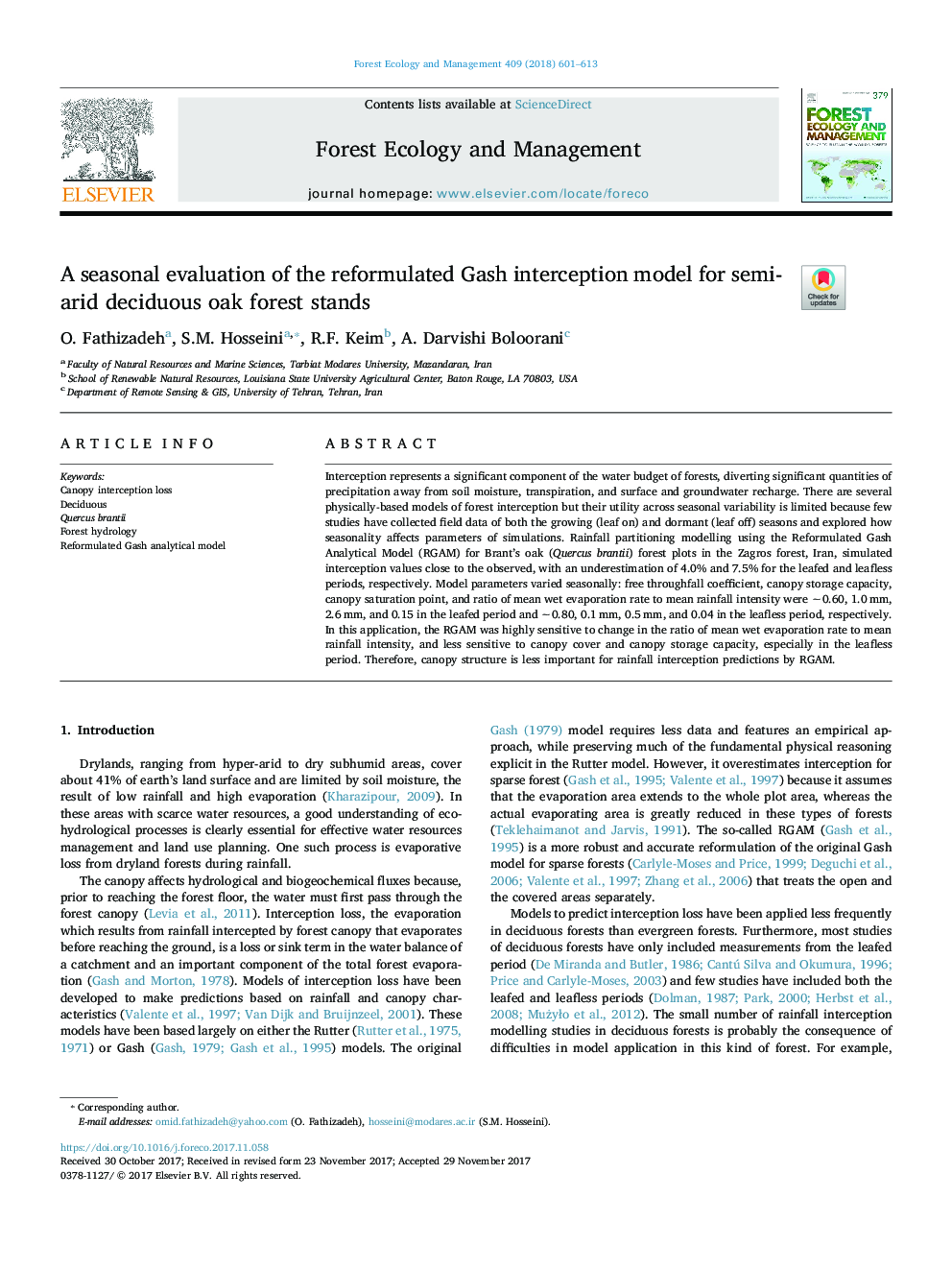| Article ID | Journal | Published Year | Pages | File Type |
|---|---|---|---|---|
| 6541950 | Forest Ecology and Management | 2018 | 13 Pages |
Abstract
Interception represents a significant component of the water budget of forests, diverting significant quantities of precipitation away from soil moisture, transpiration, and surface and groundwater recharge. There are several physically-based models of forest interception but their utility across seasonal variability is limited because few studies have collected field data of both the growing (leaf on) and dormant (leaf off) seasons and explored how seasonality affects parameters of simulations. Rainfall partitioning modelling using the Reformulated Gash Analytical Model (RGAM) for Brant's oak (Quercus brantii) forest plots in the Zagros forest, Iran, simulated interception values close to the observed, with an underestimation of 4.0% and 7.5% for the leafed and leafless periods, respectively. Model parameters varied seasonally: free throughfall coefficient, canopy storage capacity, canopy saturation point, and ratio of mean wet evaporation rate to mean rainfall intensity wereâ¯â¼0.60, 1.0â¯mm, 2.6â¯mm, and 0.15 in the leafed period andâ¯â¼0.80, 0.1â¯mm, 0.5â¯mm, and 0.04 in the leafless period, respectively. In this application, the RGAM was highly sensitive to change in the ratio of mean wet evaporation rate to mean rainfall intensity, and less sensitive to canopy cover and canopy storage capacity, especially in the leafless period. Therefore, canopy structure is less important for rainfall interception predictions by RGAM.
Related Topics
Life Sciences
Agricultural and Biological Sciences
Ecology, Evolution, Behavior and Systematics
Authors
O. Fathizadeh, S.M. Hosseini, R.F. Keim, A. Darvishi Boloorani,
